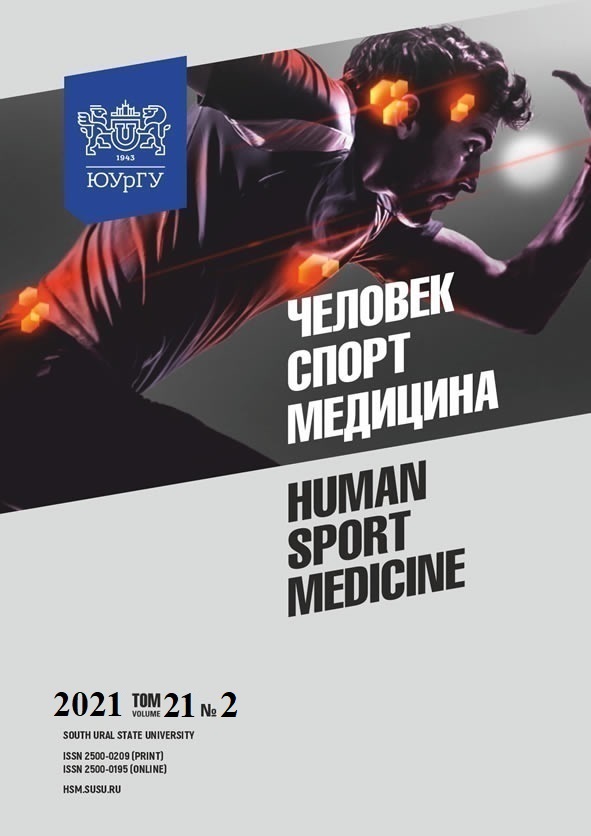INTEGRAL CRITERIA FOR SYSTEM FORMING CHARACTERISTICS OF THE FUNCTIONAL SYSTEM IN HIGHLY SKILLED ATHLETES FROM DIFFERENT SPORTS
Abstract
Aim: the paper aims to find and justify the use of assessment and diagnostic technologies in monitoring physical fitness and developing training programs depending on body weight, sports events, load intensity, style characteristics and specific features of motor activity. Materials and methods. The study involved athletes of various sports (skaters, judokas, kickboxers, hockey players, skiers, swimmers, biathletes) ages 18–23 (CMS, MS, ILMS). The following equipment was used for the study: AMP non-invasive blood analyzer, Cardiovit AT 104-PC stress system, EPICS XL flow cytometer, Digi-Lite transcranial Doppler. Results. In group I, local-regional muscular endurance developed intensively (35% of the total volume). Indices of humoral immunity significantly differed from group II (p <0.05–0.001). There were statistically significant differences in nitroblue tetrazolium activity (NBT) (p < 0.01) and the phagocytic system of neutrophils (FSN) (p < 0.05). In hockey players (defenders and forwards), statistically significant differences were found in hemoglobin, erythrocytes, erythrocyte sedimentation rate, eosinophils Conclusion: During long-term adaptation, the unified special functional system (SFS) of motor activity is characterized by functional and metabolic stability due to the phases of developmental and stabilizing adaptation before competitions.
References
References on translit
Copyright (c) 2021 Human. Sport. Medicine

This work is licensed under a Creative Commons Attribution-NonCommercial-NoDerivatives 4.0 International License.















